The fight to end the devastating consequences of landmines
It’s been 25 years since the Mine Ban Treaty was signed, but the scourge of landmines is still affecting huge swathes of the world, writes David Barnett

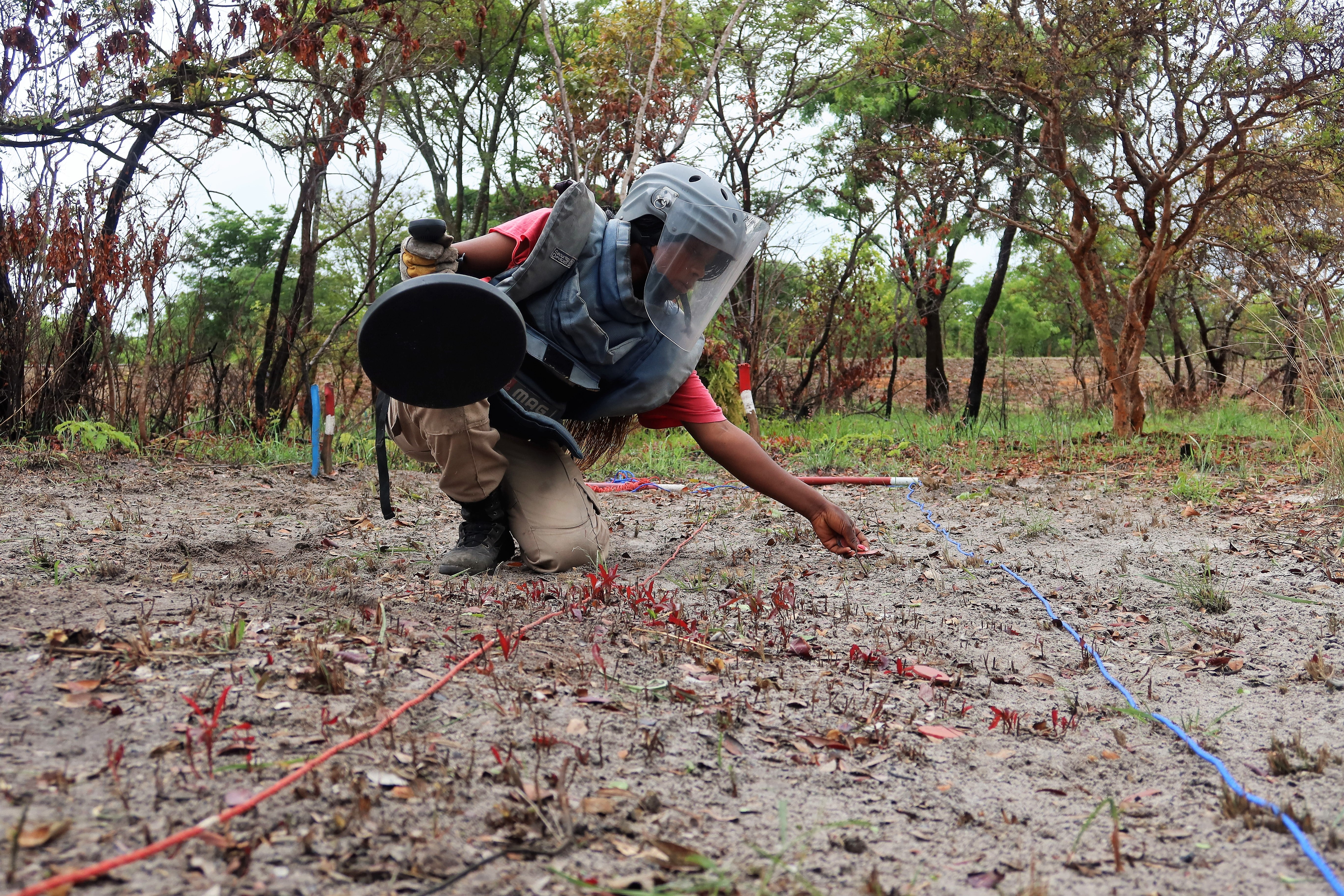
A quarter of a century ago, in January 1997 – a few months before she lost her life – Princess Diana stepped out into an active minefield in Angola, Africa, and set in motion a series of events that would have world-changing consequences.
There had long been a campaign to get the use of landmines banned in conflicts across the globe, and Diana’s walk through the minefield put a spotlight on the efforts, and led to, on 4 December that year, the creation of the Mine Ban Treaty.
Twenty-five years on, it remains one of the most widely ratified disarmament treaties in the world, with 164 nations signed up to it.
But landmines haven’t disappeared – many, many countries are contaminated with them, from conflicts going back as far as the Vietnam War. And, despite the treaty, landmines are still being used in conflicts today, notably in Ukraine and Myanmar.
The International Campaign to Ban Landmines recently released its annual report called the Landmine Monitor document.
“The ban on landmines put human security front and centre and has since empowered affected communities to regain full and productive lives,” Marion Loddo, Monitor editorial manager and final editor of the report 2022, tells me. “But the outlook right now is challenging, as we continue to observe new mine victims, new use of the weapon, delays in mine clearance, and shrinking mine action budgets. What we need now is immediate and coordinated government action.”
Casualties from mines and other explosive remnants of war (ERW) have remained high for the past seven years, following a dramatic decline immediately after the treaty came into force. At least 5,544 people were injured or killed in 2021. Civilians represented most of the victims recorded, half of whom were children.
The majority of casualties occurred in conflict-affected countries contaminated with mines of an improvised nature. In the previous year, landmines and ERW claimed lives and limbs in 50 states and other areas. Non-signatory Syria recorded the highest number of annual casualties (1,227), closely followed by State Party Afghanistan (1,074).
New use of the weapon represents one of the greatest challenges to the norm against antipersonnel landmines. The report alleges new land mine use by two states not party to the treaty, Myanmar and Russia – as well as by non-state armed groups (NSAGs) – in at least five countries.

The figures are shocking enough, but behind every single number there is a name, and a life. A life lost. Including that of Christiano, who was just seven years old when he was killed two months ago by a partially buried mine in Angola, the country where the impetus for the Mine Ban Treaty was given a major push but still suffers greatly today.
Christiano and his best friend Ngave were playing on the edge of their village when they spotted something in the dirt. Christiano picked up a stick and started hitting what turned out to be an unexploded shell from the Angolan civil war that ended 25 years ago. It exploded and he was killed instantly, while Ngave suffered a relatively minor head injury.
“Everyone in the village heard a huge boom and we all ran in the direction of the sound,” says Ngave’s father, Phillipe. “My boy Ngave was running back to the village, crying, with his head bleeding. Christiano was dead. We brought his body back to the village.”
There are several international agencies working in Angola and other countries affected by mines, including the Mines Advisory Group (MAG), which is based in Manchester but operates across the globe.
I am happy that my son will not face the same dangers as I did and that he will be safer thanks to the work that people like I and my colleagues do. He gives me hope for the future
MAG operates education sessions in the village now, teaching the children not to pick up or disturb anything they find in the dirt, and has set in place a reporting system for anyone who finds a suspect device.
Then MAG will deploy its teams of de-miners to isolate and make safe the mine, and take it away to be destroyed.
It could have been the same story for Minga, who was six years old when she picked up a shiny object in the dust that she thought was some other child’s discarded toy. It was a mine and it exploded in her hand, permanently blinding her and resulting in her right arm being amputated.
That was 13 years ago. Thanks to MAG, Minga was able to attend a school for deaf and blind children in Angola’s largest province, Moxico, where she learnt to read and write in Braille and use a custom-made one-handed Braille typewriter.
Today, Minga is one of MAG’s risk education specialists, travelling around Moxico province – an area that was at the epicentre of the war – and visiting small villages to teach communities about the hazards of unexploded ordnance and landmines.
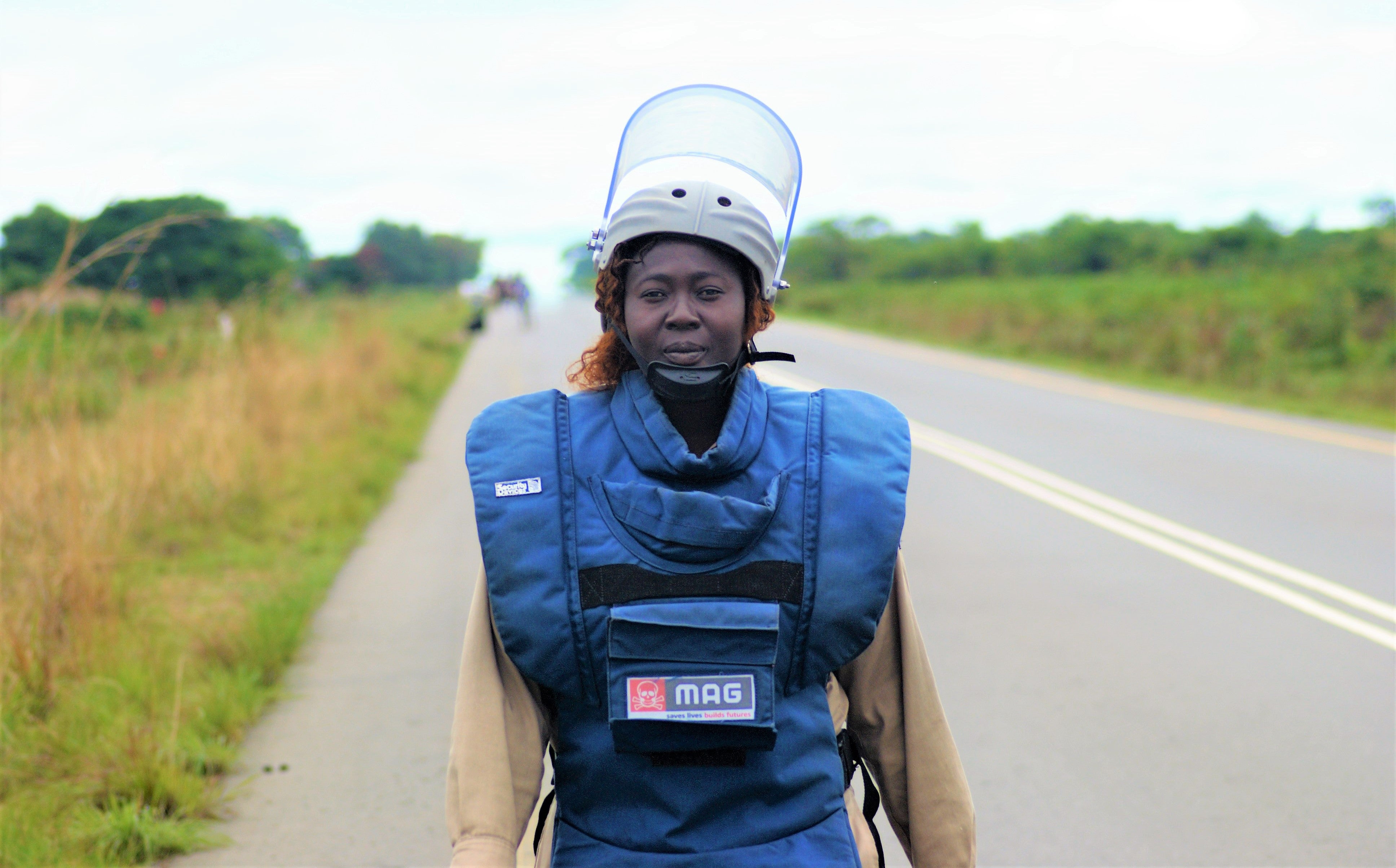
She is also a new mother, with a five-month-old baby son, Edevaldo Daniel, to care for.
“I am happy that my son will not face the same dangers as I did and that he will be safer thanks to the work that people like I and my colleagues do,” she tells me. “He gives me hope for the future – for me personally and also for my country.
“When I had my accident I was just a small child. I found something that I thought was a tin and I tried to knock the sand off it. It just exploded. I thought my life was over. Now I speak to people about my personal experience so they can learn from it, telling my personal story is always the last thing we do in our risk education sessions.”
Minga delivers her sessions in partnership with colleague Reeta, now a close friend as well as a colleague.
“When Mingha talks about her experience as a child and the effect it had on her whole life, I can see that some people are in tears,” says Reeta. “We are a good team – we really get the message across to people who still have to live with this danger.”
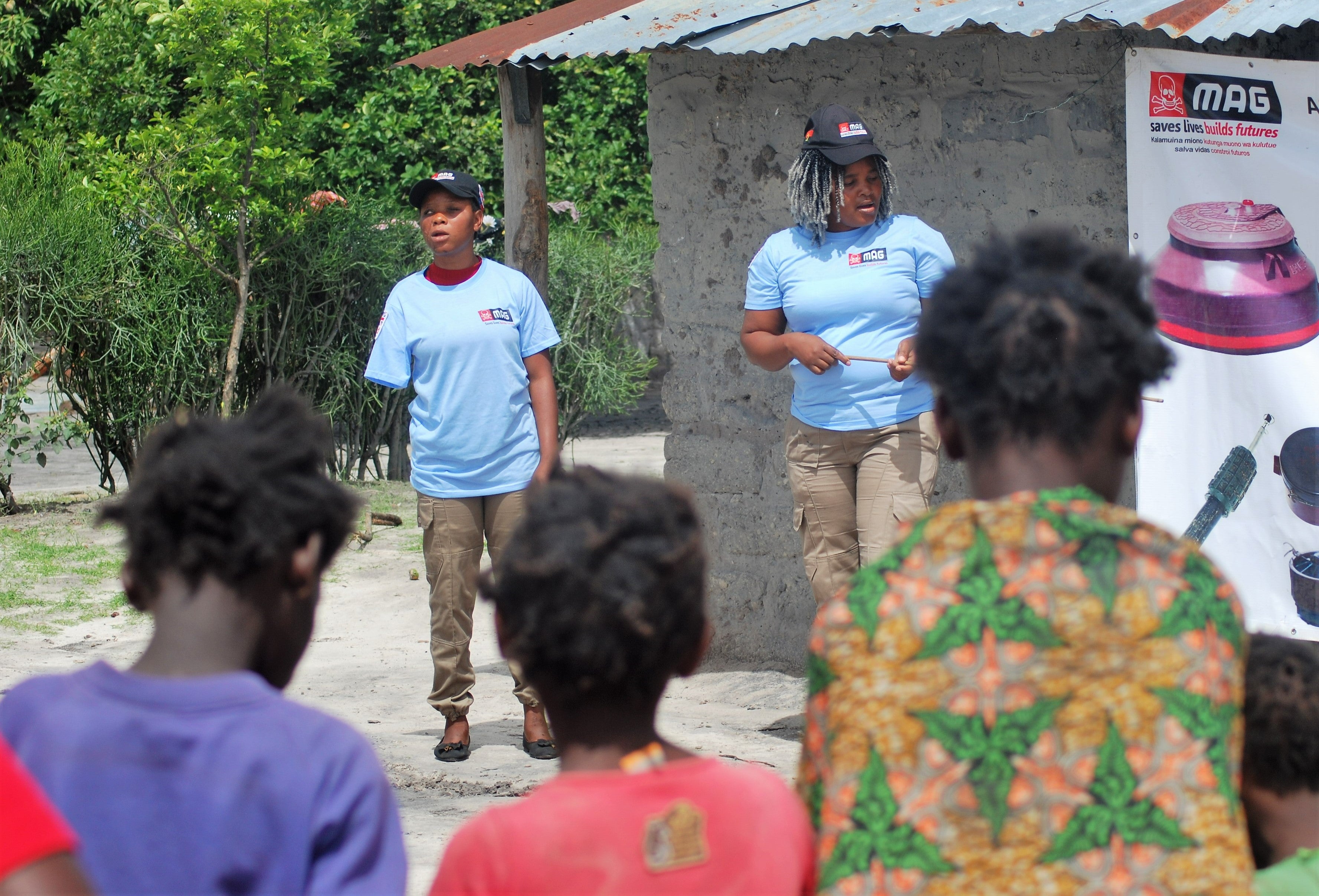
MAG’s policy is to train people in the countries affected by mines to defuse and dispose of them, providing employment for huge numbers of local people.
Among them is Ngoie Mulunda Groyca, who is 34 and has been a de-miner for five years and now has senior explosive ordnance disposal qualifications.
She leads almost 30 staff across two teams comprising de-miners and key support staff such as medics.
“When I first started I was ready to resign,” says Ngoie. “During the training, we were shown videos and pictures of the consequences of landmine accidents and then we actually got into the field I was constantly worried about snakes and insects. It’s really tough work, especially when it’s very hot, because of the heavy protective equipment we have to wear.
“My family and friends were also nervous and really didn’t want me to do the job. I can understand that.
“But then I became used to the work, I guess, and I started to really enjoy it. My family also became more confident as I reassured them about how strict we are in the way we operate. We have such a good team spirit and my colleagues are my friends.
“We’re all very proud to be doing such important work for our country and our communities. Every day we can see the progress we make, the number of metres we’ve made safe, the landmines we’ve found and destroyed. You can see the difference.”
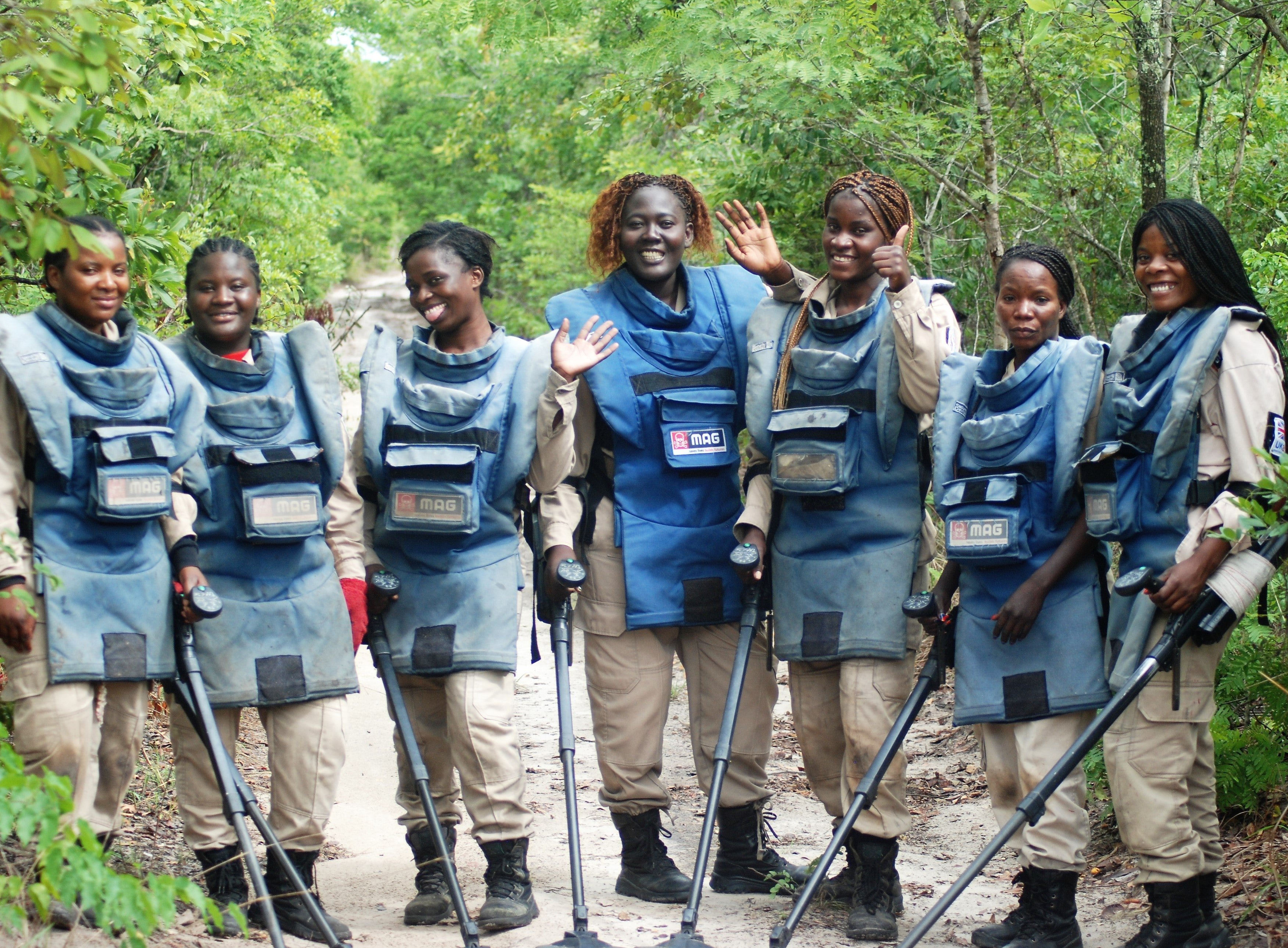
Angola is just one country affected by mines and unexploded ordnance from decades of war and conflict.
Organisations such as MAG are helping communities slowly but surely remove the scourge of landmines. But just as one territory is cleared, another theatre opens up.
Landmine Monitor 2022 identifies a fivefold increase in the number of civilian mine/ERW casualties recorded in Ukraine during the first nine months of 2022 compared to 2021 (277 civilian casualties compared to 58). According to the document, Russia has allegedly used at least seven types of antipersonnel mines since it invaded the country on 24 February. This is an unprecedented situation, in which a country that is not party to the treaty is using the weapon on the territory of a state party.
The report also documents allegations of new and extensive use of the indiscriminate weapon by government forces in Myanmar, in particular around infrastructure such as mobile phone towers, extractive enterprises, and pipelines.
Against this backdrop, state parties continue to progress in returning previously mined areas to safe use, reporting about 132sq km of land cleared of mines. As in recent years, the largest clearance of mined areas in 2021 was achieved by Cambodia and Croatia, which together accounted for 60 per cent of recorded clearance.
In the scale of things, the world’s landmine problem is a relatively affordable one to fix so we must ensure that we maintain our investment and commitment to all countries affected
“There has been huge progress in the last 25 years and the treaty demonstrates what can be achieved when political will and widespread public support align,” says Darren Cormack, CEO of MAG. “It remains one of the most ratified and successful of all disarmament treaties and has undoubtedly saved countless lives in countries all over the world, providing the impetus for clearance and doing much to stigmatise the use of landmines.
“But there is a huge amount of work still to be done. Despite the commitment of notable donors such as the UK and US governments, there is simply not enough funding to make safe those communities that have been afflicted by landmines, sometimes for generations. In countries like Angola, for instance, development is still hampered by minefields that were laid decades ago. Kids are still being killed and injured by landmines.”
He said that the level of mine deployment in Ukraine going on right now would potentially take decades to clear, which means the hard-pressed agencies such as MAG will have to divert resources from other countries to set up programmes there.
“The tragedy is that, in the scale of things, the world’s landmine problem is a relatively affordable one to fix so we must ensure that we maintain our investment and commitment to all countries affected by the problem so that no communities are left behind,” adds Cormack.
Clearing landmines is not purely about saving lives – it’s also about returning agricultural land or infrastructure to communities that might rely on that land for their very livelihoods.
“For every pound spent on clearance there is a return on investment as land is made available for activities such as agriculture or infrastructure development and communities are able to undergo post-conflict recovery and regeneration,” says Jo Dresner, MAG’s international policy and partnerships director.
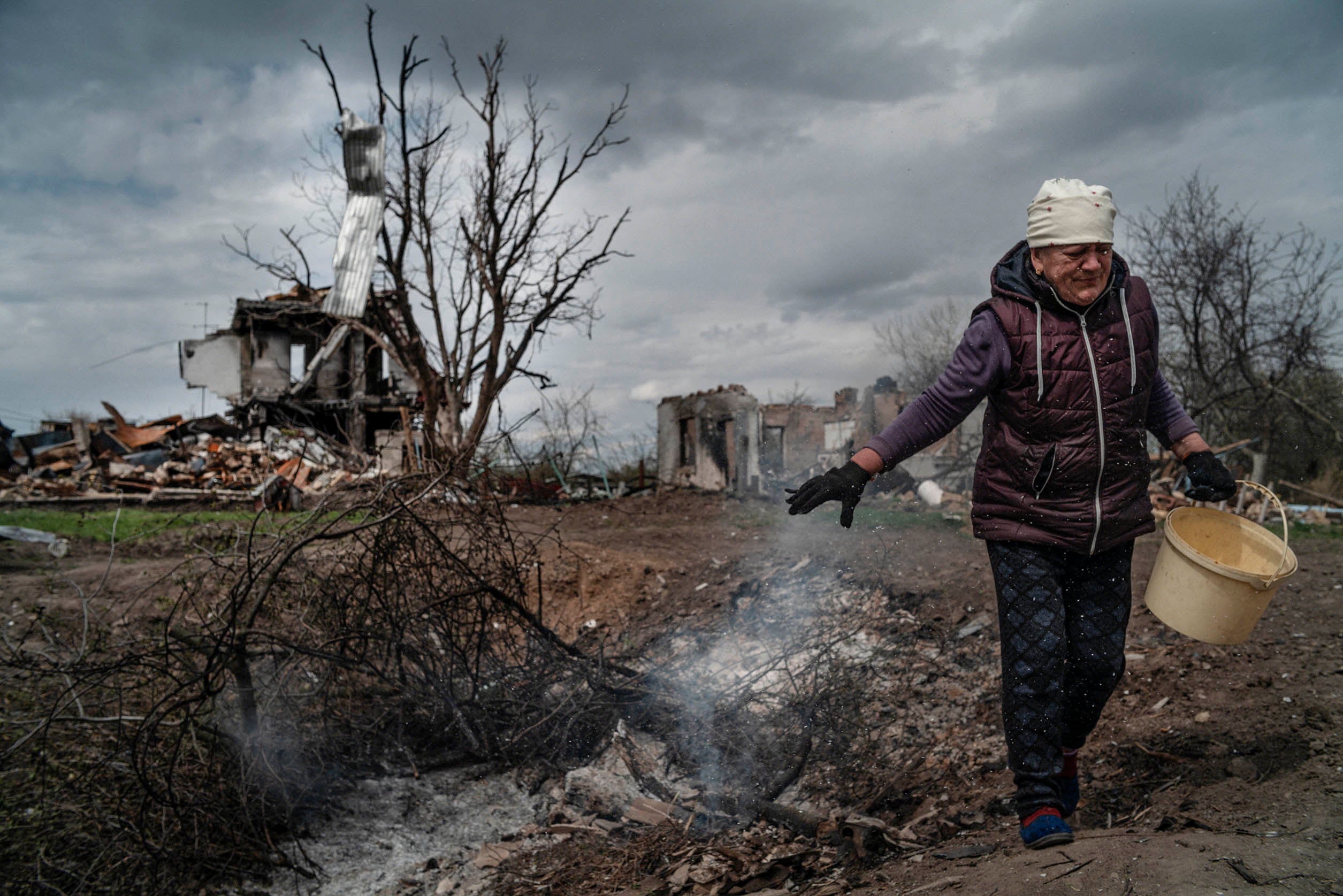
“But there remain some severely challenging contexts where survey and clearance work is very difficult. In parts of Africa, for instance, improvised landmines are being newly deployed by non-state actors, putting at additional risk communities which are already facing humanitarian crises or experiencing displacement because of issues such as conflict or food scarcity.”
According to the Landmine Monitor report, 2021 saw the lowest level of funding to the sector since 2016, despite growing needs and high casualty rates in recent years.
“The life of a survivor does not only lie in the survival of the tragedy but rather in their abilities to find ways to bridge the gaps in addressing the physical, mental, and emotional challenges,” says Alex Munyambabazi, victim assistance and disability rights expert. “This can be achieved through the provision of holistic rehabilitation and sustained commitment from donors.”
While budgets are slashed and funding reduced, in Angola – perhaps the focal point of landmine removal thanks to Princess Diana – people are trying to get on with the task of clearing up their countries.
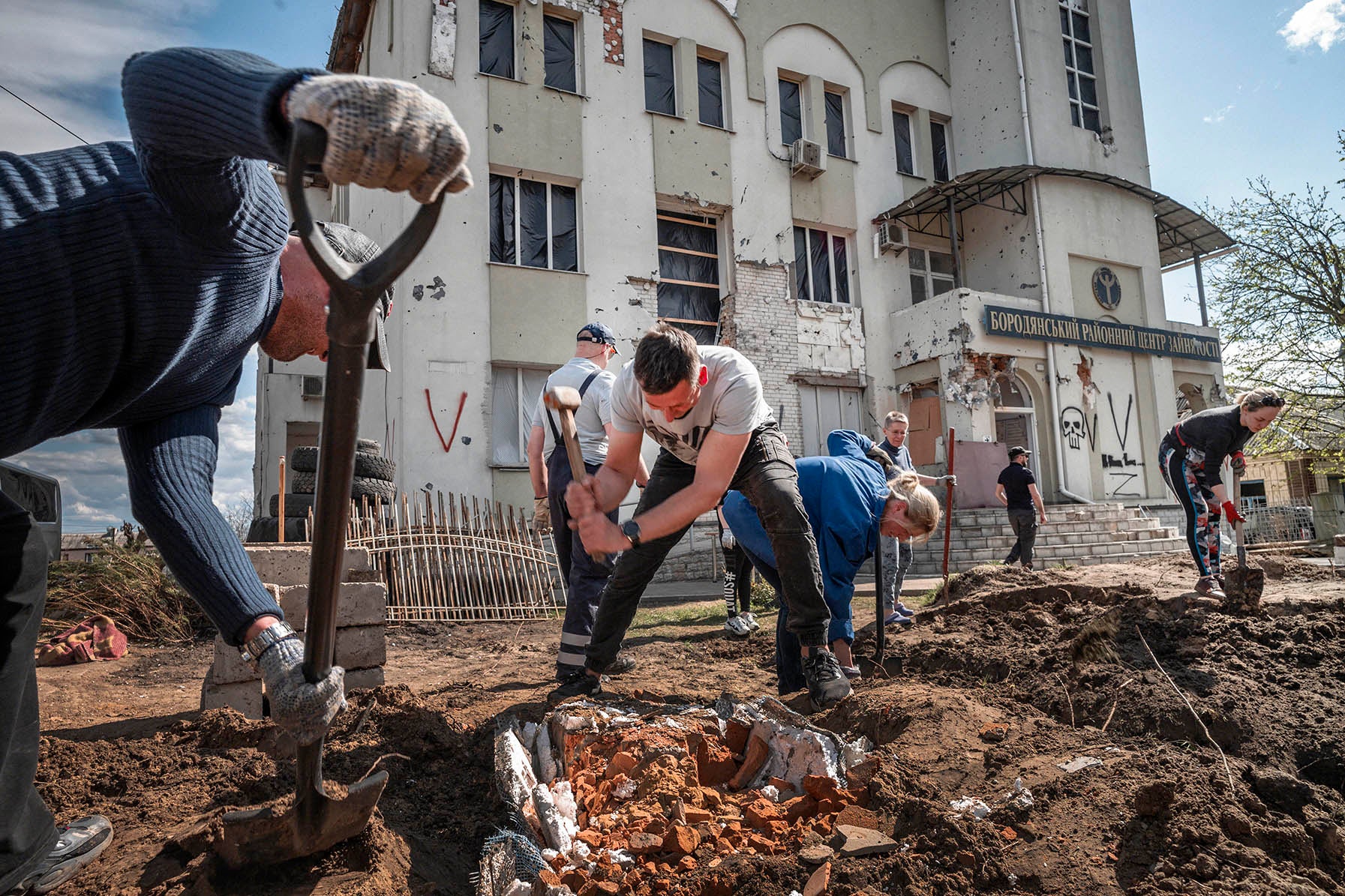
Domingish da Silva is the Muhini, or senior chief, of the township of Lucusse, which has just been declared mine-free, 20 years after the conflict that ruined the area ended.
Now 48, Domingish fled the village when he was seven, as soldiers marched into the town, and didn’t see his parents again for 21 years, as they had been forced to flee over the border to Zambia.
Not long after returning to the village, Domingish’s mother Veronica stepped on an anti-personnel landmine which had been laid in the fields. Her right leg was amputated above the knee.
When he fled, as a child, Domingish survived by foraging for food in fields, eventually finding his way to the regional capital Luena. But even when he was reunited with his family and they returned to Lucusse, the nightmare wasn’t over, even though the conflict was.
“This whole area was covered in landmines,” says Domingish. “The village was surrounded. When we first returned, the soldiers would clear a path through the belt of mines so we could go to the fields in the morning. Then they would relay the mines at nightfall so the town was entirely surrounded again.”
That Lucusse is now declared mine-free is a cause for celebration. But the entirety of Angola is not, and neither are 60 other countries and territories across the world. The work of MAG and its fellow agencies will continue, but with fresh problems arising in Ukraine and Myanmar, it’s a fight that nobody can comfortably see an end to.
Join our commenting forum
Join thought-provoking conversations, follow other Independent readers and see their replies
Comments
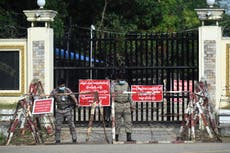


Bookmark popover
Removed from bookmarks